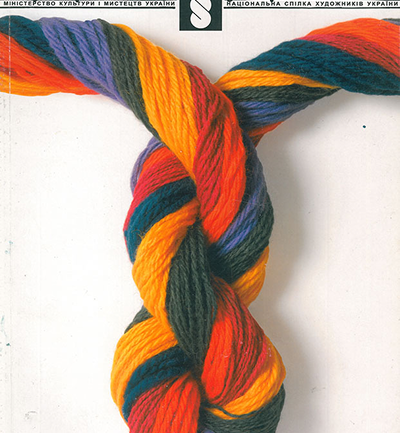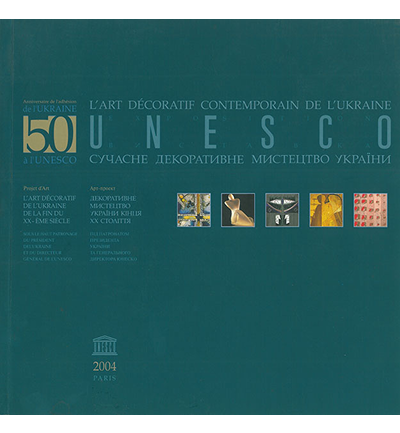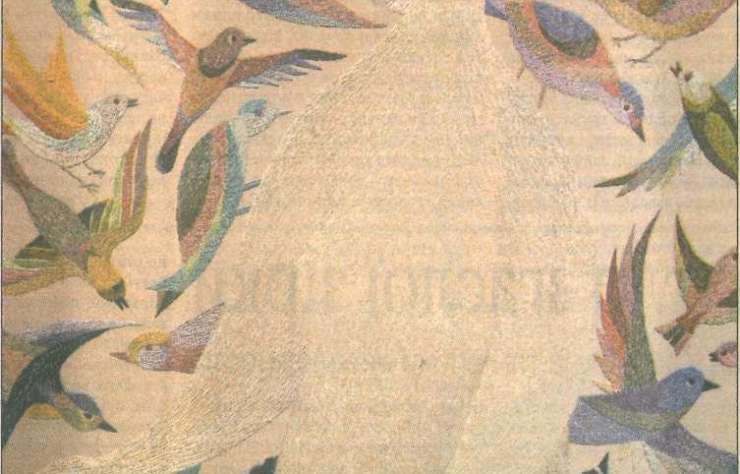
LIDIYA BORYSENKO. PANEL “TOUCH”
“Art That Creates the Aesthetics of the Environment”
How does fiber reflect the image of contemporary life?
On January 30, the III All-Ukrainian Triennial of Textile Art concludes, which has been taking place for over a month at the exhibition halls of the Central House of Artists in Kyiv—an event that Den reported on last Friday. The organizers had to extend the exhibition for another week due to the high interest it generated among visitors. “The depth and authenticity of textile art, its color and warmth of material, attract people who today especially need positivity. That’s why our exhibitions are always well attended,” said co-curator of the Triennial and member of the National Union of Artists of Ukraine, Tamila Pechenyuk.
The idea to organize a triennial of textile art in Ukraine arose from a desire to promote this form of art, which has millennia-old traditions in Ukraine. While Ukrainian artists fit naturally into the global context of contemporary textile art, within Ukraine itself, this art form is not always recognized as “high art.” Yet textile is deeply rooted in the most profound archetypes of Ukrainian consciousness, and fiber, the shirt, and the towel have never been mere household items—they are symbols.
Incidentally, the concept of the III All-Ukrainian Triennial, “The Feeling of Time. The Renaissance of the Handcrafted”, aligns with global artistic trends. Today, the hand-made is becoming dominant in global art, particularly in textile art as an art of materiality.
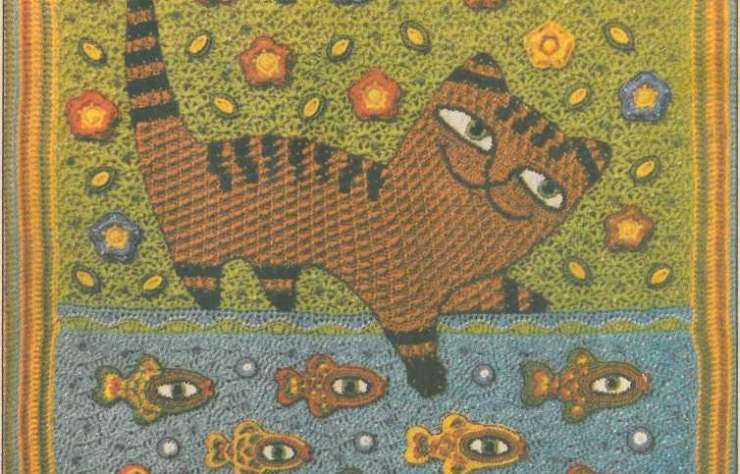
OLENA KOZAK. PANEL “THE KITTY CATCHES A FISH”
“Textile art is increasingly entering the field of contemporary art. Well-known international and Ukrainian artists working in contemporary art often turn to the means of textile expression, to the plasticity of weaving,” says Tamila Pechenyuk, co-curator of the triennial. “After all, textile art is the creation of something with deep meaning. Just ten years ago, it wasn’t considered high art. But today, just like at the turn of the 19th and 20th centuries, there’s a growing movement pushing back against the division of art into ‘high’ and ‘low.’ There is only art — and it should create an environment for people. And textile precisely creates the aesthetic of our environment. Today, the interpretation of tradition in art has also fundamentally changed. It is no longer merely about repeating what has been done before or trying to preserve things from the past. Tradition now refers to deeper meanings — to the fundamental origins of art. Thread and fiber are those origins. And through fiber or thread, one can create a portrait of contemporary life.”
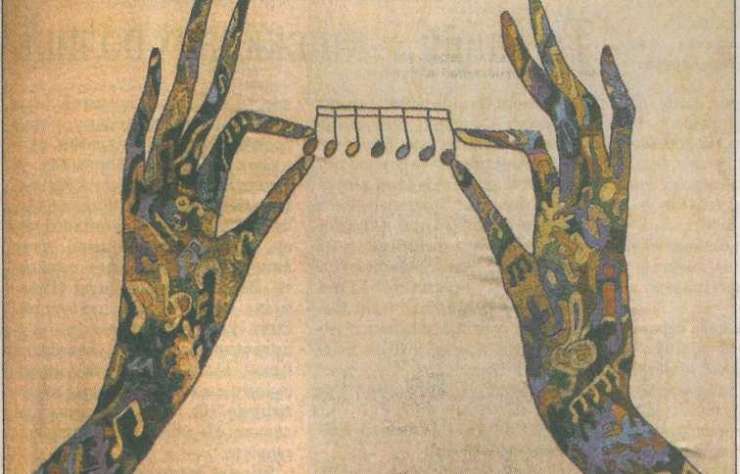
OKSANA BORYSOVA. PANEL “A HOT AIR BALLOON FOR LOVERS”
PHOTO REPRODUCTION COURTESY OF OKSANA BORYSOVA
The presence of thought and creativity in each presented work elevates textile art above the realm of purely decorative or applied art. One of the participants of the III All-Ukrainian Triennial of Textile Art, Lviv-based artist Oksana Borysova, shared the meaning behind her works with Den — particularly her piece “A Towel for Andy Warhol”, which Den mentioned in last week’s publication:
— While working on “The Towel…”, I deliberately used a clipping from the Den newspaper, specifically from the Culture section. In fact, the word “culture” dominates this work. Andy Warhol, the brilliant popularizer and the creator of many of the foundations that are now central to show business, was of Ukrainian descent. I wanted to emphasize that. The newspaper clipping represents contemporary Ukrainian culture, which is woven — in different ways — into the portrait of Andy Warhol. As a result, the deformation of the portrait occurs from within, due to the intrusion of modernity. The beginning and end of my work are done in the style of traditional Ukrainian weaving, which is why the piece is called “Towel…” Through this work, I wanted to deliver a kind of message from the contemporary world.

ALLA ZHMAILO. COLLAGE “FISH”
A few years ago, I presented a work at an exhibition titled “Press-aaa”. It was a kind of installation — a panel woven from newspaper clippings that transitioned into a massive scroll of newspapers. It symbolized how a person constantly resists the onslaught of information — that informational “press” that floods us from the very first steps of life. Today, I’m more concerned with ecological themes. In fact, textile artists express their personal impressions through their works, sometimes in a demonstrative or declarative manner — and their pieces can always be interpreted in a certain way.
By Viktoria Skuba, Photo reproductions by Kostiantyn Hryshyn “Den”
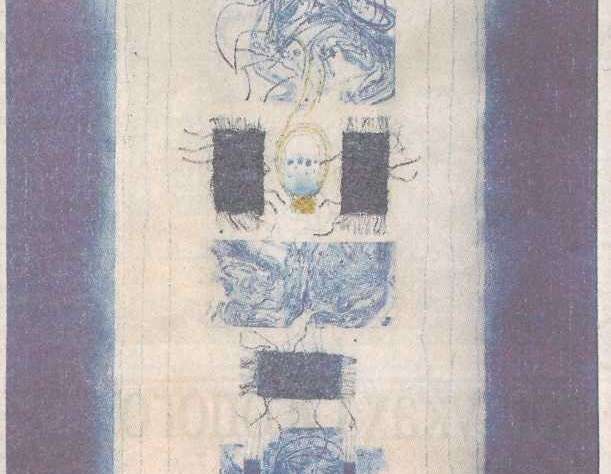
NATALIA BORYSENKO. Fragment of the diptych “Invitation to Paradise”


